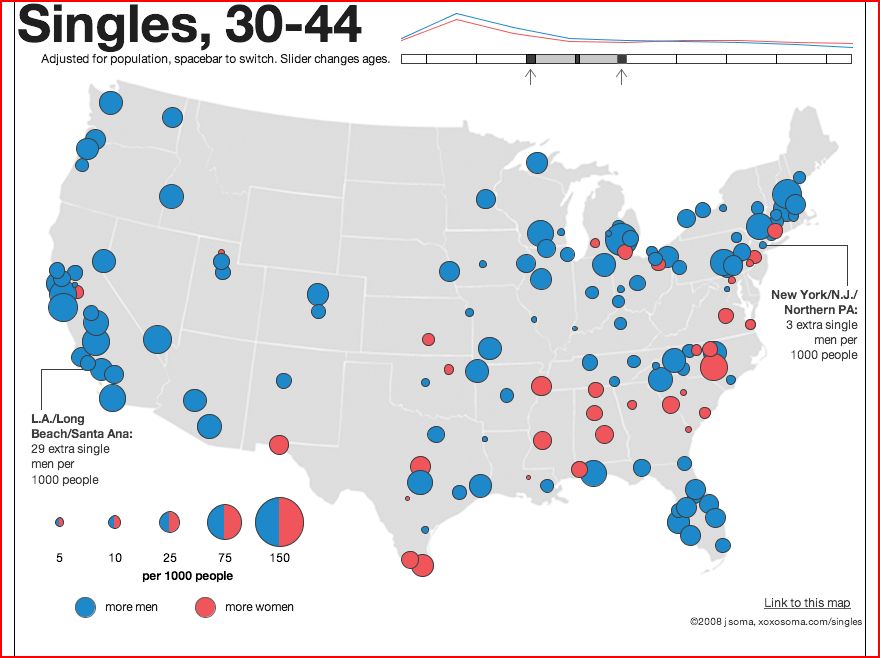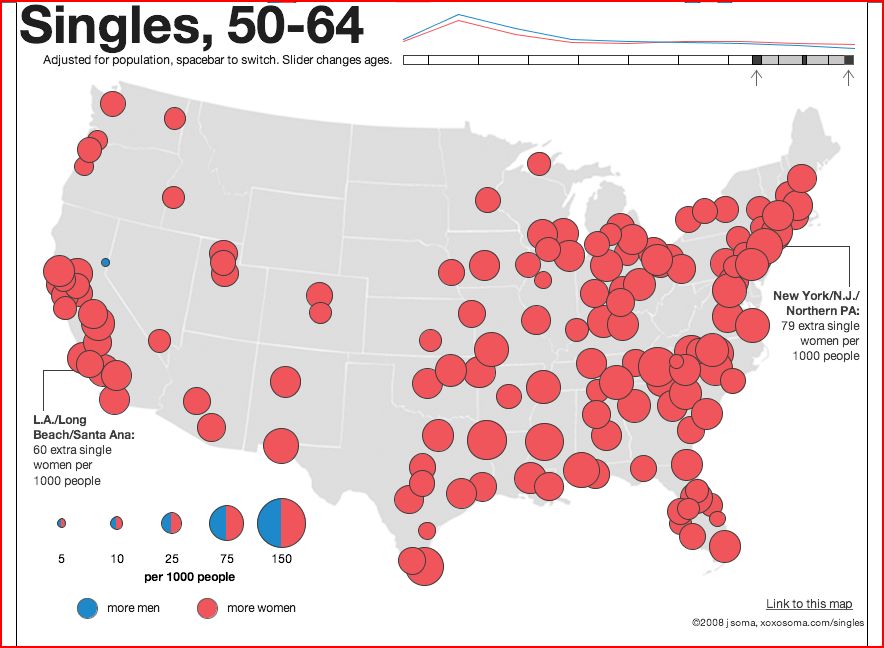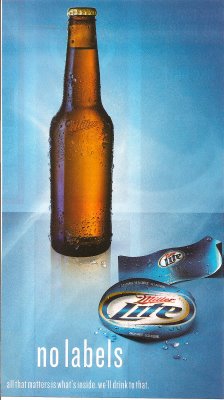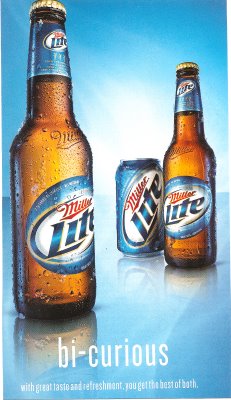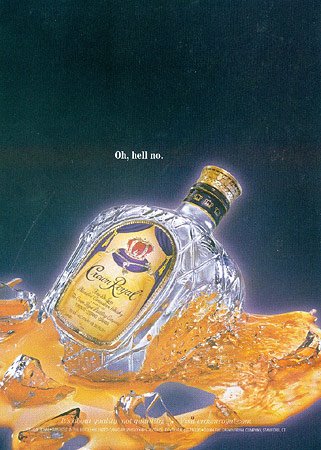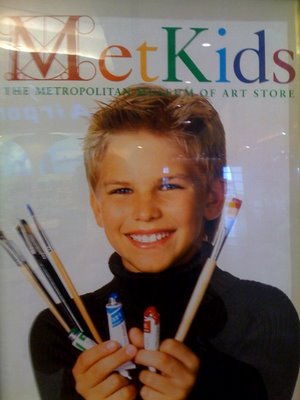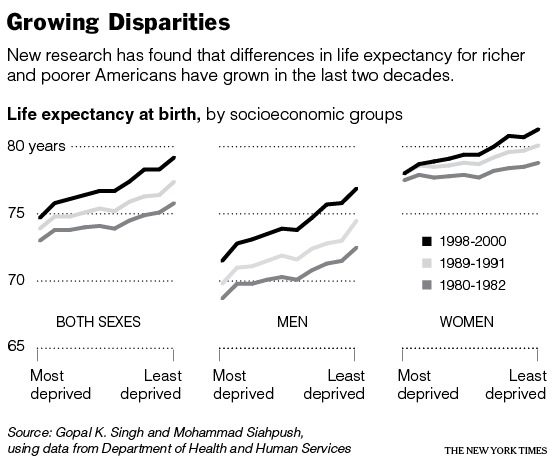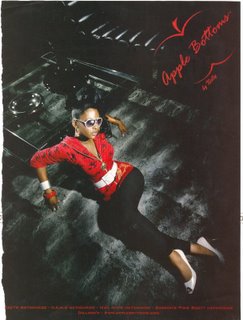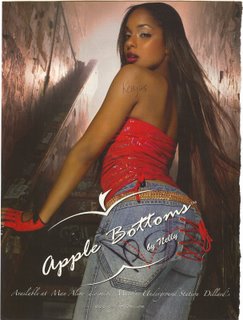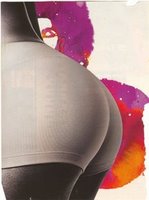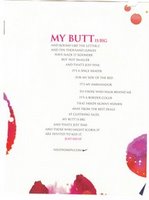This image demonstrates the disproportionality in the marriage market across the United States (found here). Basically, if you’re a single, heterosexual woman on the west coast or a single, heterosexual man in the New York area, you’re in luck!
NEW! This map is now available in an interactive form in which you can choose which age group to look at. Below I’ve pasted in screen shots of my current dating pool (30-45) and what I have to look forward to (yikes!). Click here to interact with the map yourself.
